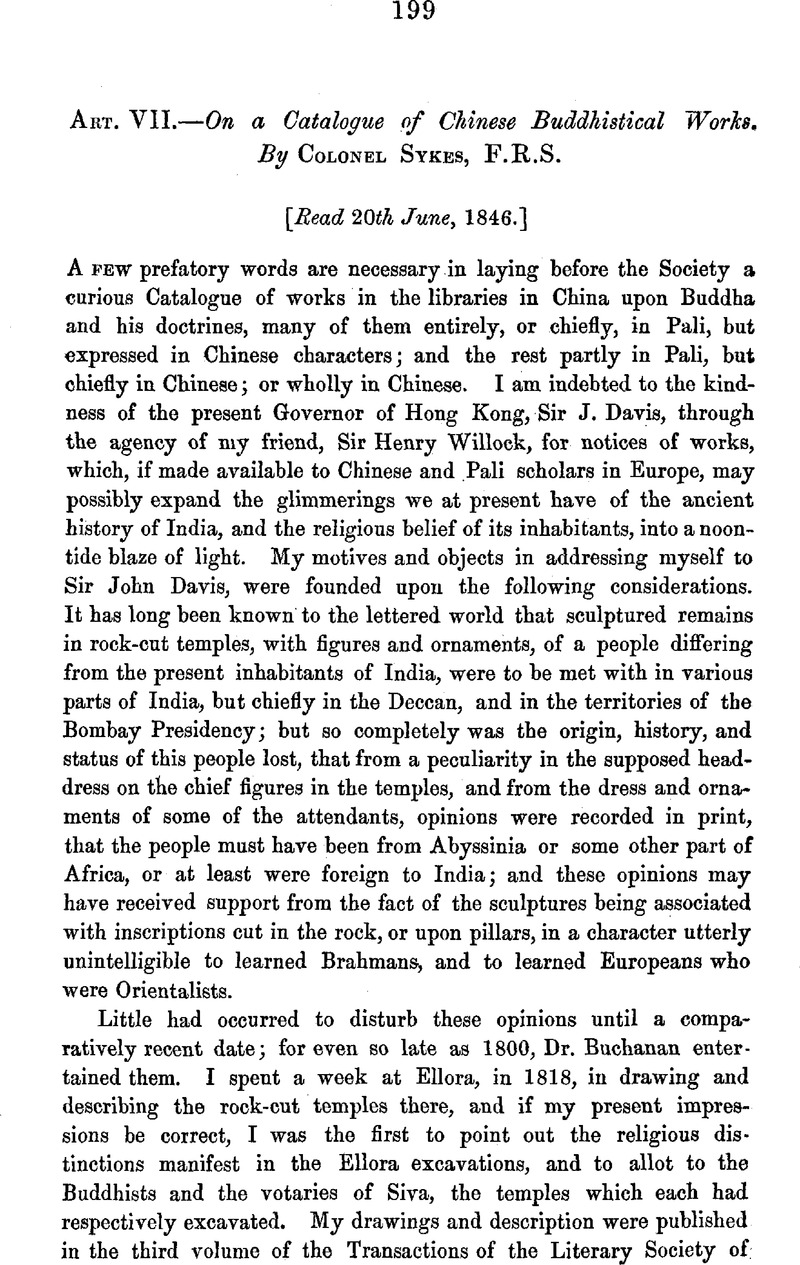No CrossRef data available.
Article contents
Art. VII.—On a Catalogue of Chinese Buddhistical Works
Published online by Cambridge University Press: 14 March 2011
Abstract

- Type
- Original Communications
- Information
- Copyright
- Copyright © The Royal Asiatic Society 1848
References
page 200 note 1 Sir Charles Malet, who had previously written on the wonders of Ellora, expresses himself vaguely about there being traces of the Jains, but in his description of the caves, he never once attributes any one of them to either Jains or Buddhists. Joinville, in his account of the Buddhism of Ceylon refers its origin to India; and Salt, in his description of the caves of Salsette, had distinguished the excavations of the Buddhists from those of the Sivaists. It might have been expected, therefore, that the true character of the caves at Ellora would have been given before 1818.
page 205 note 1 There were not any idols until a century after the death of Buddha; when a wooden statue of him was set up in a temple; being evidently a pious corruption.




